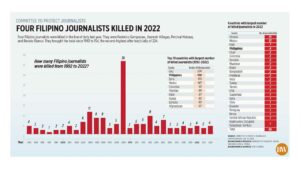Agri Hubs: An innovative solution to achieve food security

Among the urgent tasks of the incoming administration is to address our underperforming agricultural sector. Doing so will solve three of the country’s festering problems — poverty, income inequality, and food security.
It will be recalled that the Philippines was once the agriculture superpower in the region. At its peak in the 1960s, the Philippines was the world’s 9th largest sugar producer and the second largest exporter of coconut products. As for rice, President Carlos Garcia’s International Rice Research Institute (IRRI) ushered-in a boom in rice production, making the Philippines one of the world’s leading rice producers. We were also a net exporter of tropical fruits.
On the back of a vibrant agricultural industry, the Filipino people were among the richest populations in Asia with a per capita income of $210 in 1965. Note that the peso was worth P3.92 to one US dollar back then.
Unfortunately, a spate of wrong policies caused the rapid demise of the agricultural sector. For expediency, let me cite the three principal causes for the downfall.
The first was the nationalization and monopolization of the sugar, coconut, and rice industries. This was done by President Ferdinand Marcos to consolidate his stronghold over the agricultural sector.
The Philippine Coconut Authority, the Coconut Investment Fund, and later, the Coconut Industry Investment Fund were established to control the coconut industry with Danding Cojuangco at the helm. Meanwhile, the sugar monopoly was controlled by Roberto Benedicto through the Philippine Sugar Commission and the National Sugar Trading Corp. (Nasutra). The rice industry was controlled through the National Food and Agriculture Council.
The nationalization and monopolization of sugar, coconut, and rice trades squeezed the profits away from the farmers in favor of the monopolies. This left no incentives for farmers to expand their plantations, let alone modernize through mechanization.
The second reason is the ill-conceived Comprehensive Agrarian Reform Program (CARP). Following Marcos’ ouster 1986, the government of Cory Aquino enacted CARP with the objective of democratizing the farm sector. While CARP succeeded on a political level, it failed to arrest the continued drop in agricultural output.
CARP resulted in an average farm size of one hectare with a maximum holding of five. Exacerbated by an inefficient cooperative system and expensive farm inputs (seeds, fertilizers, machinery), farmers were relegated to subsistence farming characterized by low farm outputs, low incomes, and zero bandwidth for mechanization.
The failure of CARP to uplift the lives of our farmers resulted in them selling their land to buyers who would repurpose it for residential or commercial uses. In hindsight, the CARP law should have installed a proviso that agricultural land cannot be reclassified and that should land remain idle for three years or more would revert back to government. But this is water under the bridge now.
The third reason is the influx of imported agricultural products due to liberalization. With low farm outputs, market forces compelled traders to import agricultural products to feed our ever-growing population. Unfortunately, the local farm sector was so inefficient that it was unable to compete with imported alternatives in both price and quality. It still is. Such inability only made the country more dependent on imported food.
The situation has become so worrisome that we now rely on imports to augment our needs for sugar, rice, wheat, flour, pork, chicken, beef, milk, potatoes, garlic, onions, peas, vegetables, fruit, and salt. The fact that we import salt, even if we are an archipelago, exemplifies the desperate state of the agricultural sector. The country has become so dangerously dependent on imports for our daily sustenance that it is now a social and security risk.
As for farmer incomes, 23% of our workforce, or roughly 10 million Filipinos, derive their livelihood from the agricultural sector. Yet, the sector’s contribution to gross domestic product is only 9%. The average farmer has a monthly income of only P9,930 per month, which is below the poverty line.
AGRI HUBS
The problems of the agricultural sector are complex. Apart from the ill effects of CARP and competition from abroad, there is the issue of insufficient irrigation, expensive seeds and fertilizers, lack of farm to market infrastructure, a malfunctioning cooperative system, lack of farmland (due to the non-passage of the Land Use Law), among many others.
Is there a more expedient solution? University of the Philippines professor and Sanford Ph.D. holder Carlos Primo C. David offers an innovative solution.
According to Mr. David, there must be a confluence of five elements for agriculture to flourish in a sustainable manner. Vast tracks of land must be available for farming. Industrial farming methods must be adopted. Small farmers must be integrated into the business model to make it economically inclusive. Post-harvest processing plants must be integrated into the supply chain to achieve higher value-added. And finally, there must be a research and development arm by way of an agriculture-based colleges or universities.
Mr. David proposes that select state universities and colleges around the country be transformed into self-contained agricultural production hubs (or Agri Hubs).
There are approximately 112 state universities and colleges, not counting their 421 satellite campuses. By law, each campus is endowed with anywhere from 50 to 650 hectares of land, the majority of which are idle. Mr. David proposes that the Department of Agriculture build fully integrated Agri Hubs on as many campuses as possible. Each hub will specialize in crops that are most suitable for its climate. The goal is for the Agri Hubs to produce specialized crops at the lowest cost and at a scale enough to meet local demand. They will also produce finished goods of their crops in canned, bottled, dried, and powder form.
As a part of a college or university, the Agri Hubs can adopt science-based farming for maximum yield. Students stand to benefit too from on-site learning and hands-on research.
Since Agri Hubs are to be situated on government land, they can achieve enough scale to make industrial farming viable without the incumbrance of CARP. Each hub will be equipped with modern farming equipment, post-harvest processing plants and storage facilities, funded by the government. The business model can even be adjusted to make it attractive for private-public partnerships.
In terms of management, it is easier to professionally administer self-contained Agri Hubs than thousands of fragmented farms scattered around the country.
Mr. David’s proposal is one that makes a lot sense given its do-ability without need for new legislation.
There is no way out of it. Government must address our underperforming agricultural sector if we are to achieve food self-sufficiency and increase incomes of the farming sector. Mr. David’s Agri Hub concept is an innovative solution that deserves serious consideration.
Andrew J. Masigan is an economist
Facebook@AndrewJ. Masigan
Twitter @aj_masigan




